
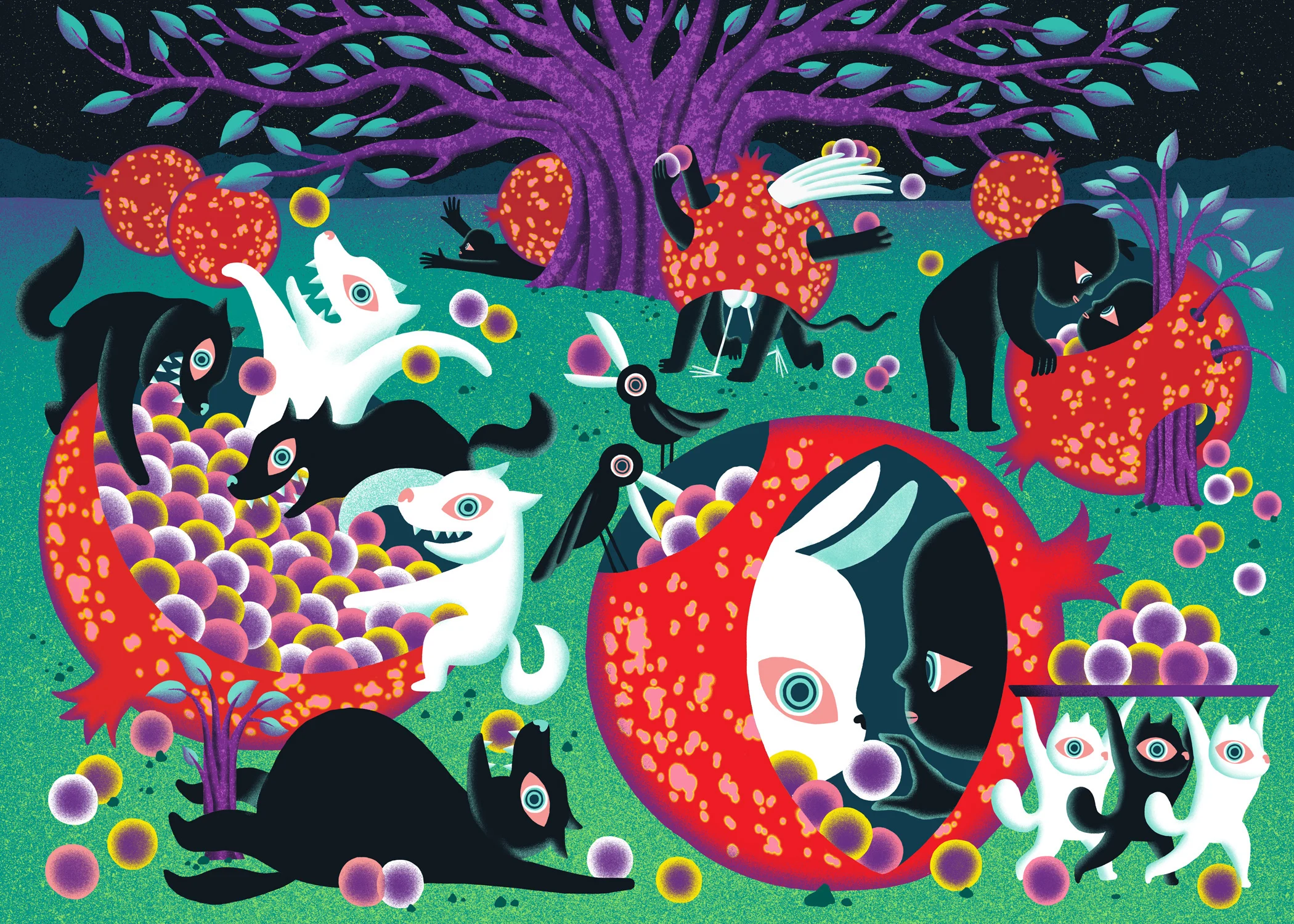
If anything might convince you that it’s okay to let your kids listen to grown-up audiobooks when they’re probably too little to do so, it’s the work of Dani Choi. Inspired by the clandestine myths and legends she heard as a child, and by the stark, stylistic aesthetic and themes in Stanley Kubrick’s The Shining, Dani creates a whole new world. Not as dark on the surface as the ones she’s inspired by, but just as wild. Writer Alix-Rose Cowie speaks to her about her work.
It was inappropriate audio tapes she listened to as a child that inspired the themes in illustrator Dani Choi’s series, The Garden of Mischief. Growing up in Seoul, the tales she would listen to were Korean myths filled with all the grown-up gory stuff: death, reincarnation, vengeance and sacrifice. The violence of the stories might raise a modern parent’s eyebrow, but it stoked her burgeoning curiosity and she wanted more.

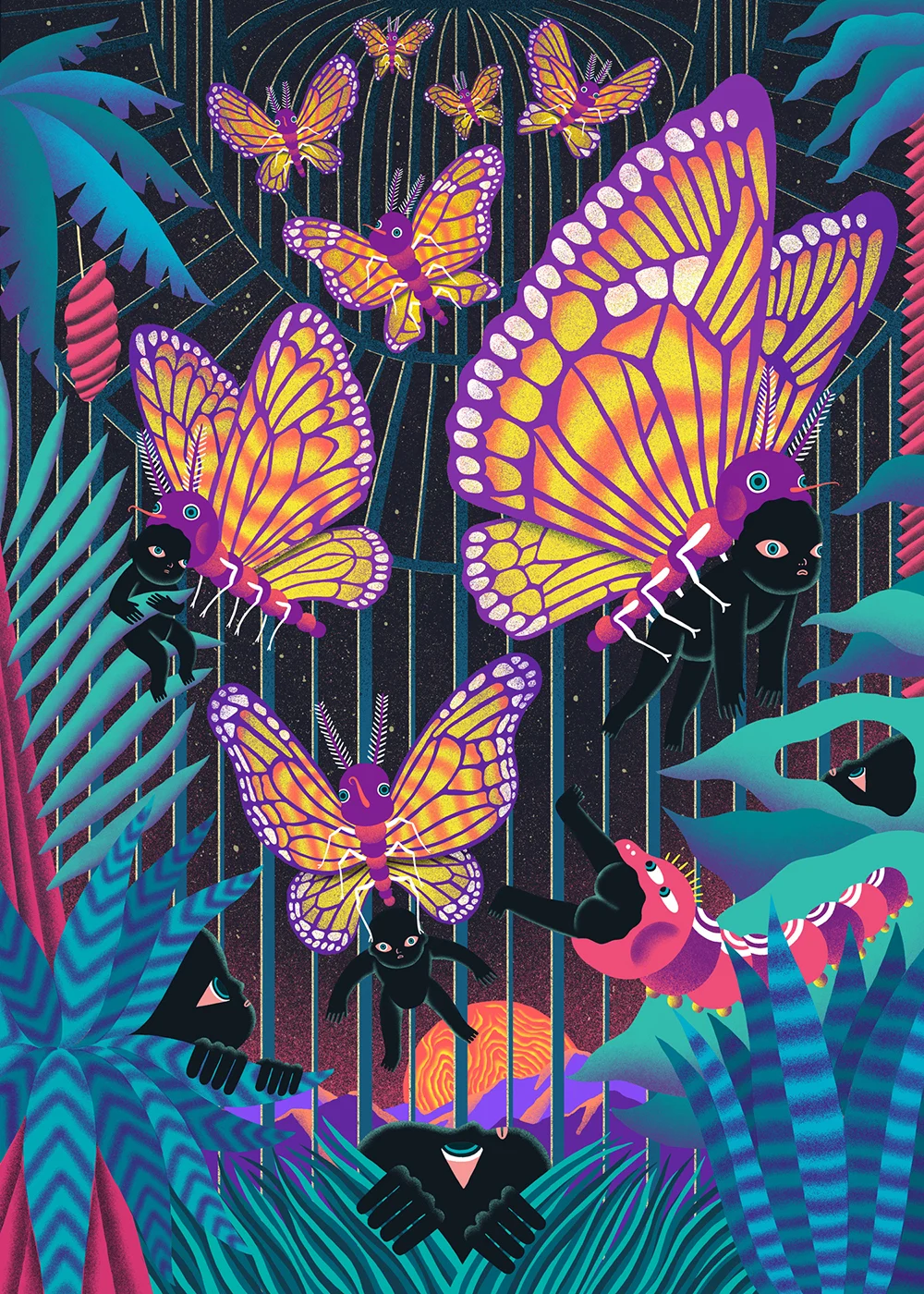
As a teenager, she went through a major Greek mythology phase. She was amused by the characters’ back-stories which she found captivating and bizarre. More recently, faced with an open-ended brief for her thesis project for her MFA in Illustration as Visual Essay at the School of Visual Arts in New York, she remembered what makes a good story. When creating The Garden of Mischief, she hoped that the eccentricity and violence of the mythology that enchanted her as a child would permeate the world she created. “I hoped that the project would trigger curiosity in viewers and be a source of fascination and entertainment,” she says.
The Garden of Mischief is made up of various scenes from a terrible-beautiful world. “It’s a world erected from chaos and madness where animals, humans and plants grow wildly together,” Dani says. “It’s a dreamlike landscape dominated by gigantic fruits, insects and plants that often feast on humans and animals.” The images can be viewed in any order and the happenings in each scene serve to reveal more about the world she’s built. “The garden doesn’t have the traditional cause-and-effect relationship among characters, and everything happens in total randomness,” she says.
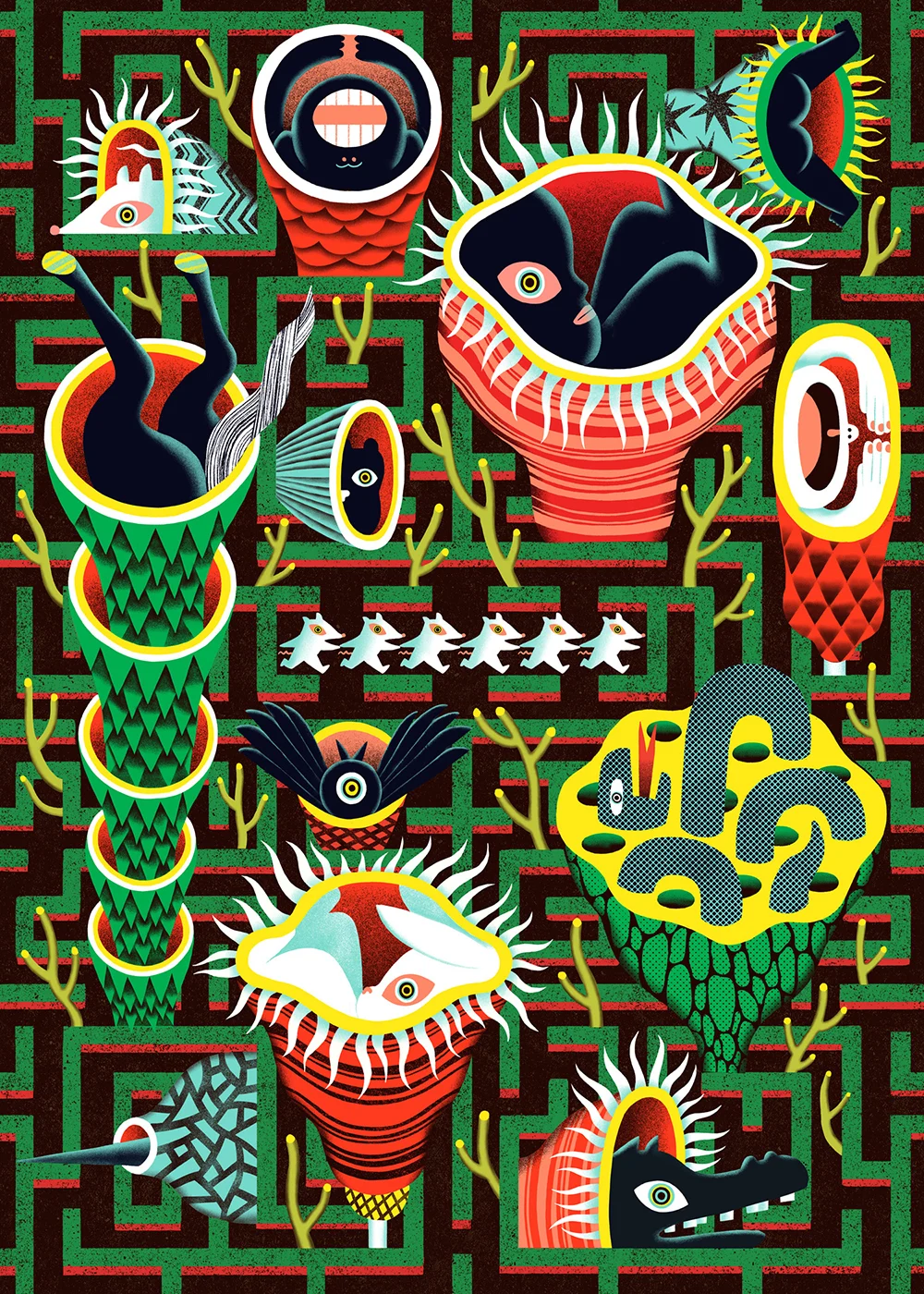
A fictitious world turned out to be perfect subject matter for a thesis. “I had a very long time-frame to complete the project so it gave me the liberty to venture and push the limits of my imagination,” Dani says. Stylistically, she challenged herself with more complex compositions and color palettes than she’d done before. “In a way, I wanted to test myself to see if I was capable of handling such a complicated subject.”
To build her world, Dani began with the staging. Each scene takes place in a garden and she thoroughly researched stylized Baroque gardens, conservatories, cactus gardens and zen gardens and collected reference images of each. Some of the gardens are inspired by places she’s visited, like the serene rock garden at Ryōan-ji temple in Kyoto. Meanwhile the idea for The Maze Garden came from The Shining. “I’m quite obsessed with Stanley Kubrick’s artistry and The Shining in particular has so many Mise-en-scènes that left deep impressions on me,” she says.
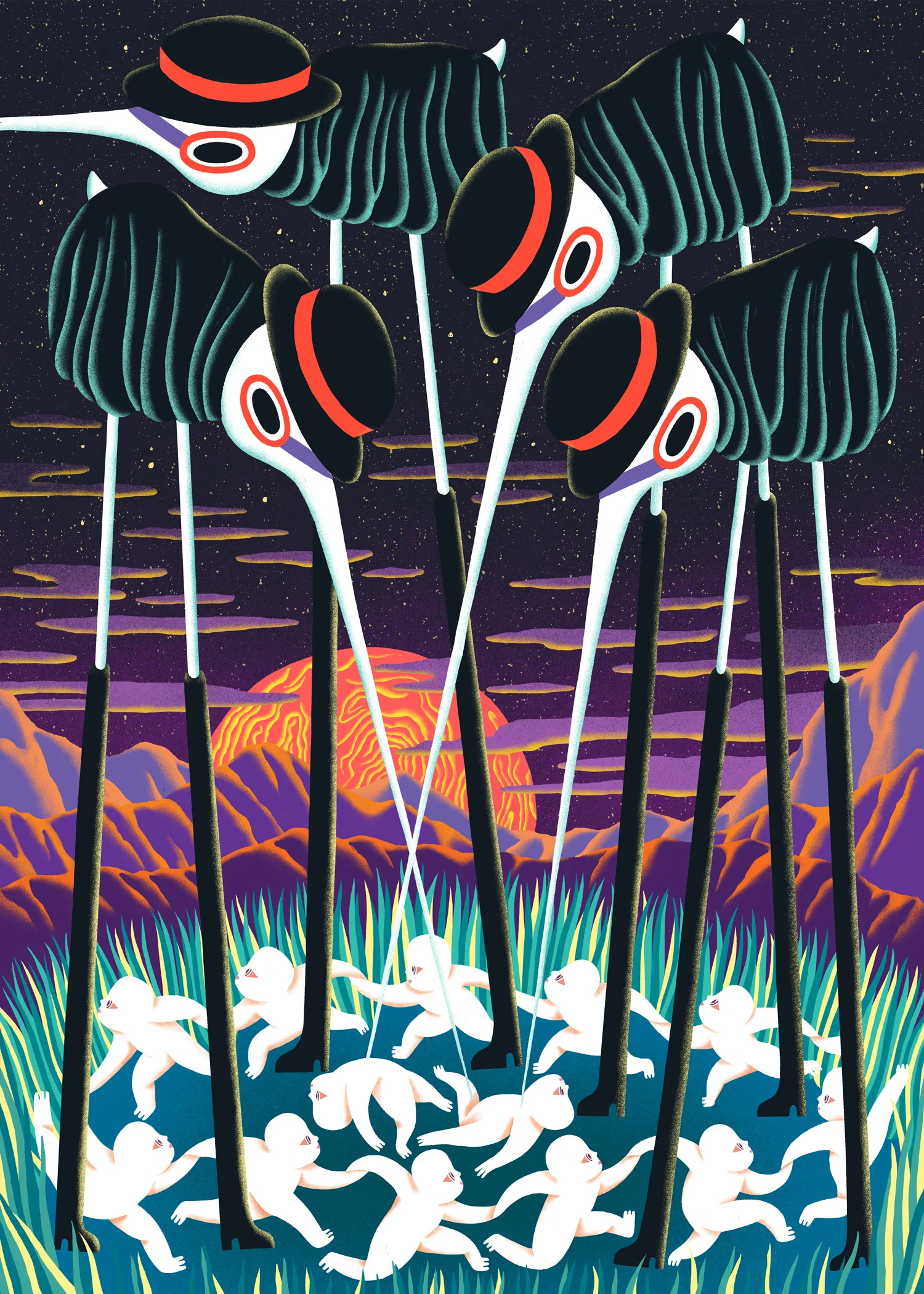
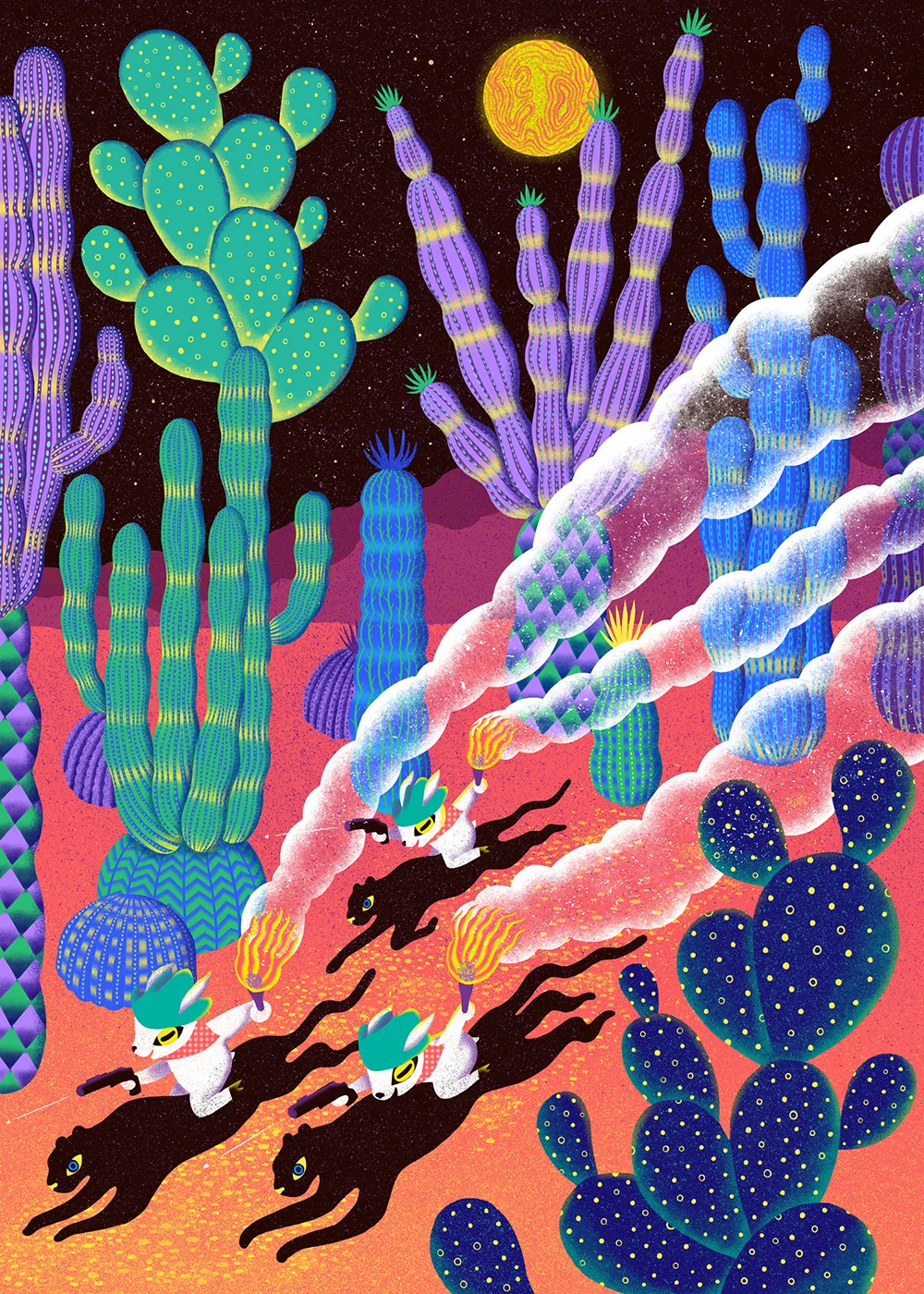
The more you know, the more you’ll have things to draw inspiration from.
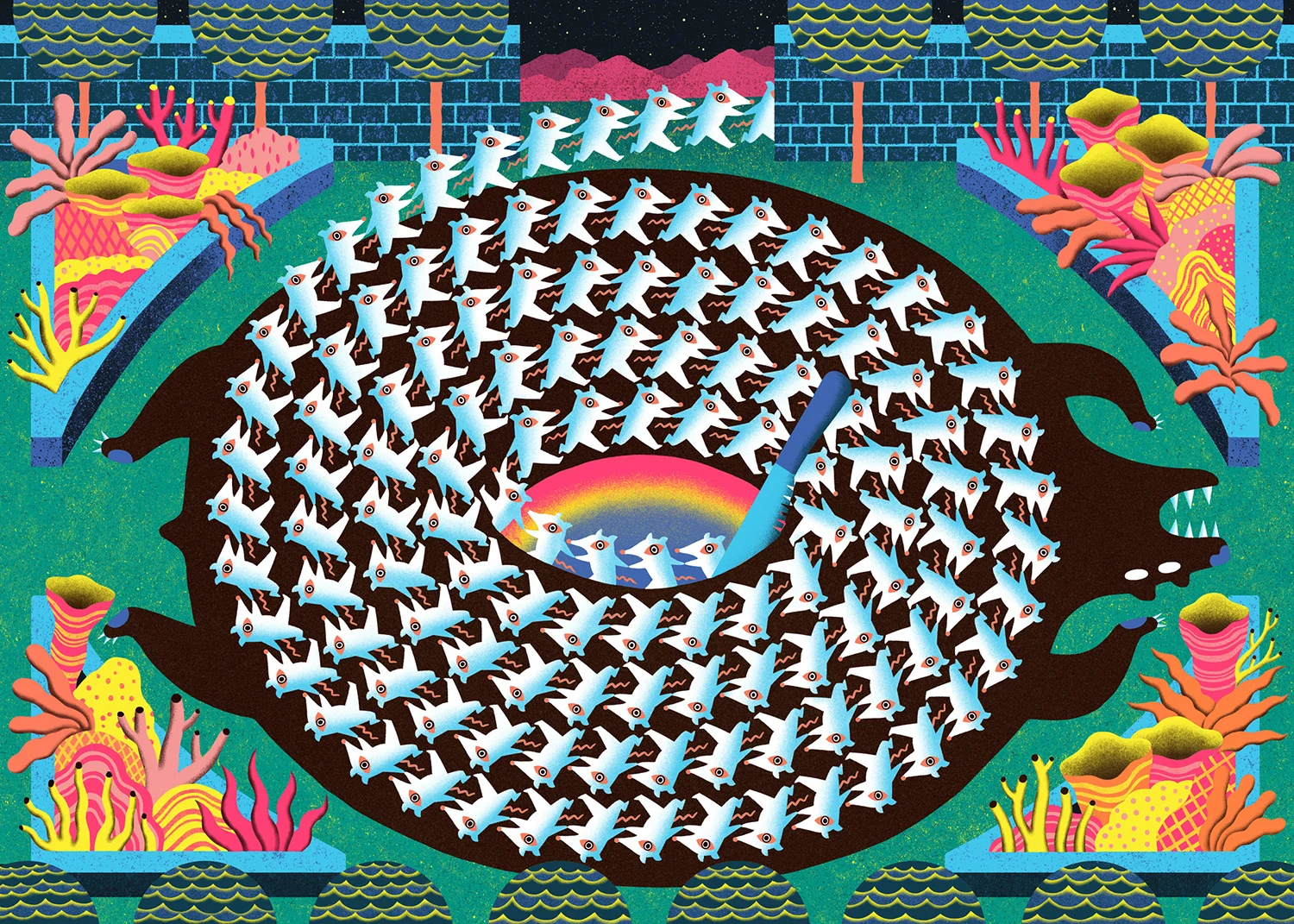
From there Dani decided what kind of creatures would live best in each habitat and what they would be doing. The vignettes zoom in on these different natural or pruned spaces where all manners of ritual and riot ensue. In The Big Bird Pond, nightmarish storks in sinister black boots and bowler hats poke human babies with needle beaks. In The Desert Garden, billy goat bandits ride on the backs of panthers, guns and torches blazing, through a crop of neon cacti. In The French Garden, a continuous line of rats syrtaki out of the belly of a bear that’s been sliced open with a knife.
If the spectacles feel familiar that might be because the works are also largely based on Hieronymus Bosch’s The Garden of Earthly Delights. Dani has been mesmerized by the masterpiece since she first saw it in a book her father gave her as a child. “In his wonderfully humorous and enigmatic triptych, Bosch invites viewers to his world of wild ecstasy and whimsical weirdness and visualizes numerous themes in a symbolic, radical manner,” she says. In their anarchy, each of her gardens is inspired by the 500-year-old painting but she borrowed from it more directly for The Great Orchard. “If you look closely at the centerpiece of The Garden of Earthly Delights, you can find humans eating round red seeds which seem to be causing the madness across the land,” she says. “I found this idea very humorous and adopted it into my illustration where animals and humans eating the seeds of giant pomegranates causes all the frenzy in the garden.”
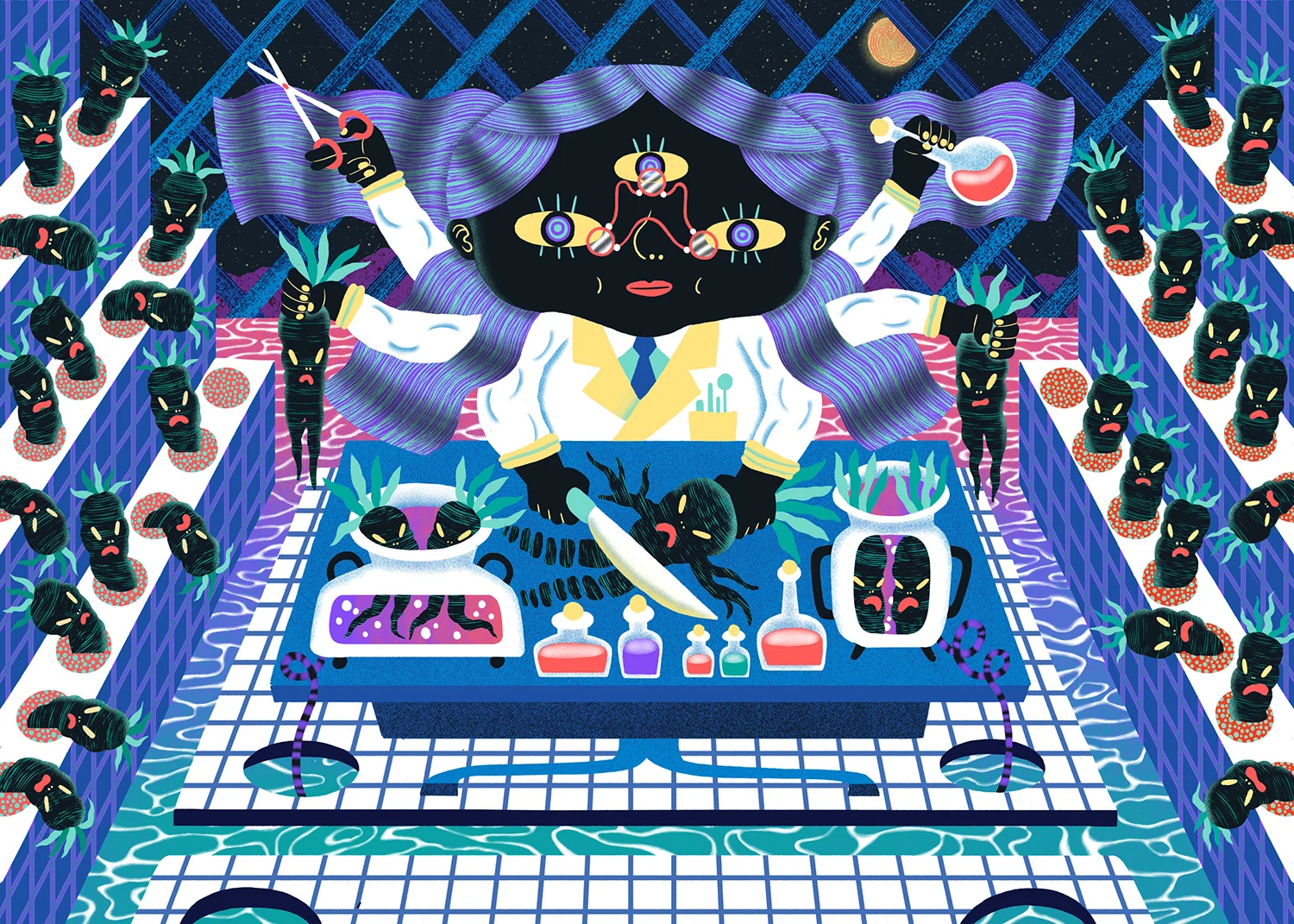
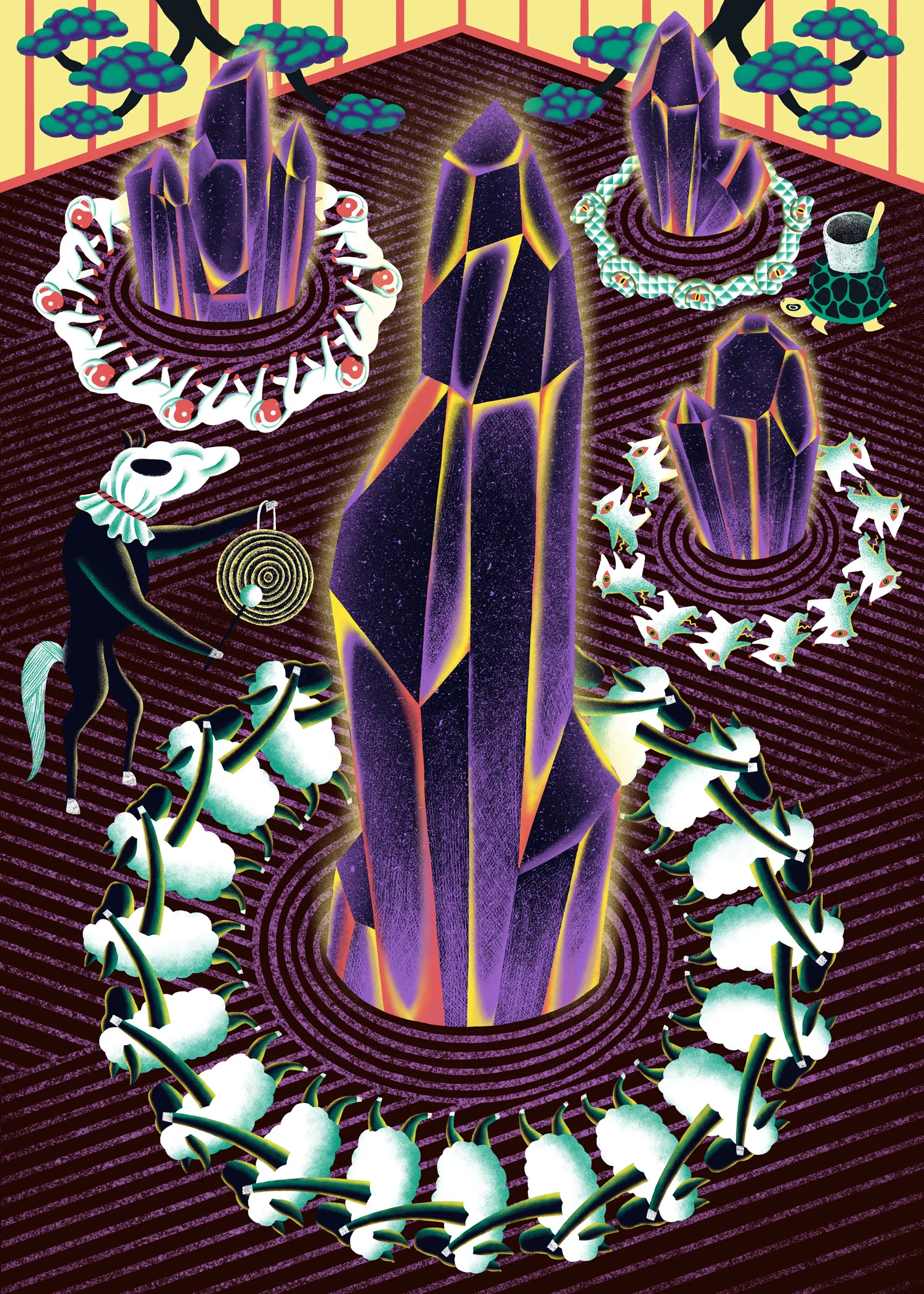
While chaos reigns in The Garden of Mischief, there is some kind of hierarchy at play. The land is governed by The Gardener, a many-armed deity in a lab coat who can be found in The Gardener’s Laboratory where she grows mandrakes – a mythical plant that looks like an angry carrot – to brew the potion that causes the world to descend into absurdity. The cowboy goats, the tall-booted birds, the mermaid in The Gazebo Lake and the hooded horse in The Zen Garden attempt to keep the animals and humans under control.
“I don’t think of myself as an especially imaginative person,” Dani says. Which is surprising coming from somebody who thought up baby-munching butterflies. Instead of coming from a mystical place of the kind her characters live in, she finds creativity is rooted in drawing inspiration from what you’ve already seen and heard and interpreting this in your own way. “It’s extremely helpful to be perceptive of your surroundings,” she says, “because the more you know, the more you’ll have things to draw inspiration from.”

